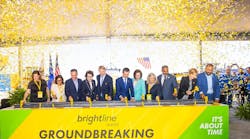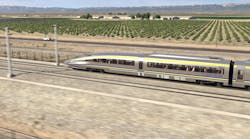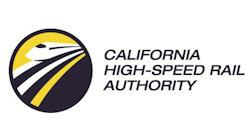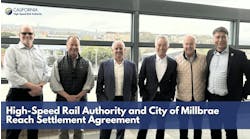New report outlines ways high-speed rail projects can be completed faster in U.S.
A new report from Eric Goldwyn, a clinical assistant professor at New York University Marron Institute, highlights ways high-speed rail projects can be completed faster in the United States.
The report, “Speeding Up Domestic High-Speed Rail Project delivery,” outlines five recommendations to help speed up high-speed rail projects:
- Greater Federal Direction and Nurturing Local Experimentation — Establishing dependable funding, developing staff familiar with high-speed rail, committing to building an intercity passenger rail network and nurturing experimentation at the subnational level.
- Technical Standards — Standards need to be created for the project. Standards help maintain production quality, reduce costs, ensure interoperability, simplify interfaces with other components, maximize longevity and encourage suppliers to enter the high-speed rail market.
- Links to Universities and Industries — Universities and industries can help boost training opportunities to help plan, design and deliver high-speed rail.
- Project Management, Procurement and Risk — Project sponsors need to invest in internal capacity to develop well-defined projects, manage consultants and contractors and coordinate across multiple manageably sized contract packages.
- Permitting, Third Party Agreements and Planning — Projects need billions of dollars in grant funding to successfully be completed.
According to the report, there are two main themes found in helping to accelerate high-speed rail projects:
- Scale: Administrative and geographical focus
- Management: The entity leading the project
The report examines three current high-speed rail projects that could be sped up with the recommendations outlined:
- The California High-Speed Rail Authority’s California high-speed rail project
- Brightline West’s high-speed rail project that will connect Las Vegas, Nev., and southern California.
- The Texas Central 240-mile high-speed rail line that will connect Houston and Dallas/Fort Worth, Texas.
In the report, Goldwyn notes that with all the funding the federal government issues for these types of projects, there needs to be terms and conditions to ensure the money is spent legally and that time commitments are met to speed up local permitting. Goldwyn notes one element contributing to delays in a project is paying contractors who cannot perform work due to waiting for approval from the federal government. Goldwyn says this over emphasizes environmental review. He recommends separating the planning process from the environmental review process to refocus the emphasis on designing the best project and figuring out the biggest challenges of these projects.
The full report can be viewed here. Goldwyn is working on a second high-speed rail report that relates to the Northeast Corridor. That report is expected to be completed by fall 2024.

Brandon Lewis | Associate Editor
Brandon Lewis is a recent graduate of Kent State University with a bachelor’s degree in journalism. Lewis is a former freelance editorial assistant at Vehicle Service Pros in Endeavor Business Media’s Vehicle Repair Group. Lewis brings his knowledge of web managing, copyediting and SEO practices to Mass Transit Magazine as an associate editor. He is also a co-host of the Infrastructure Technology Podcast.





